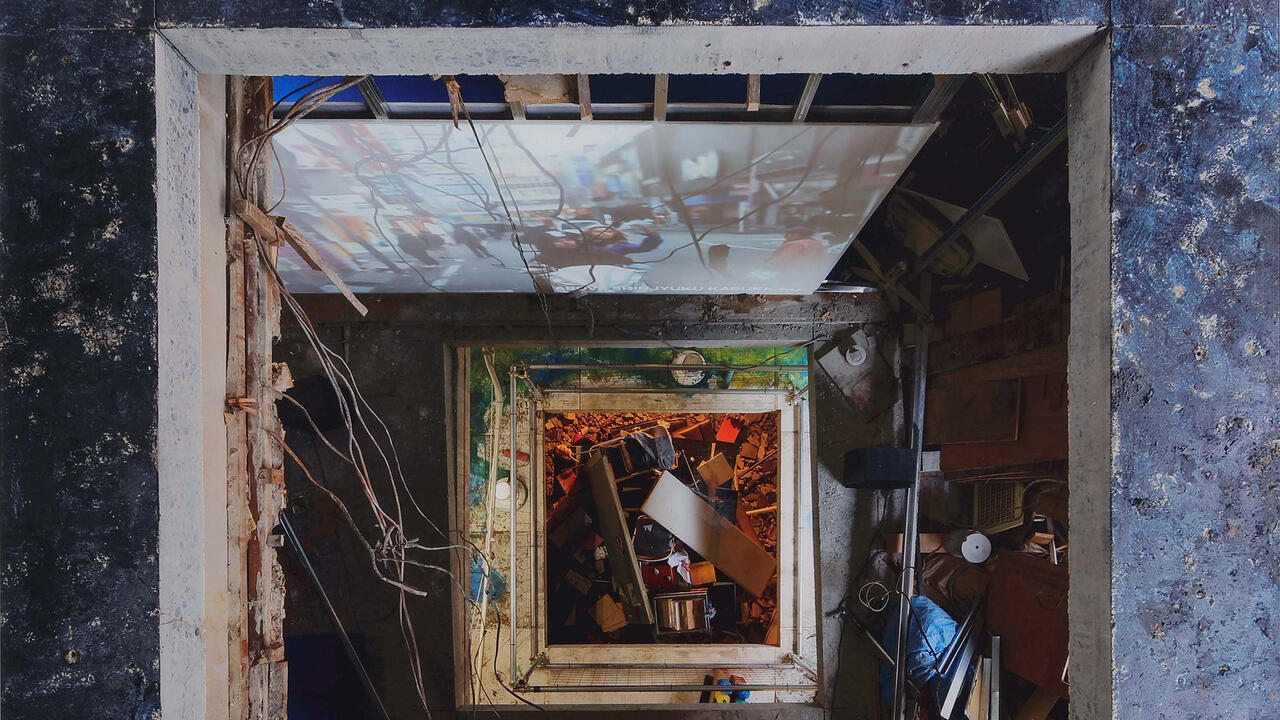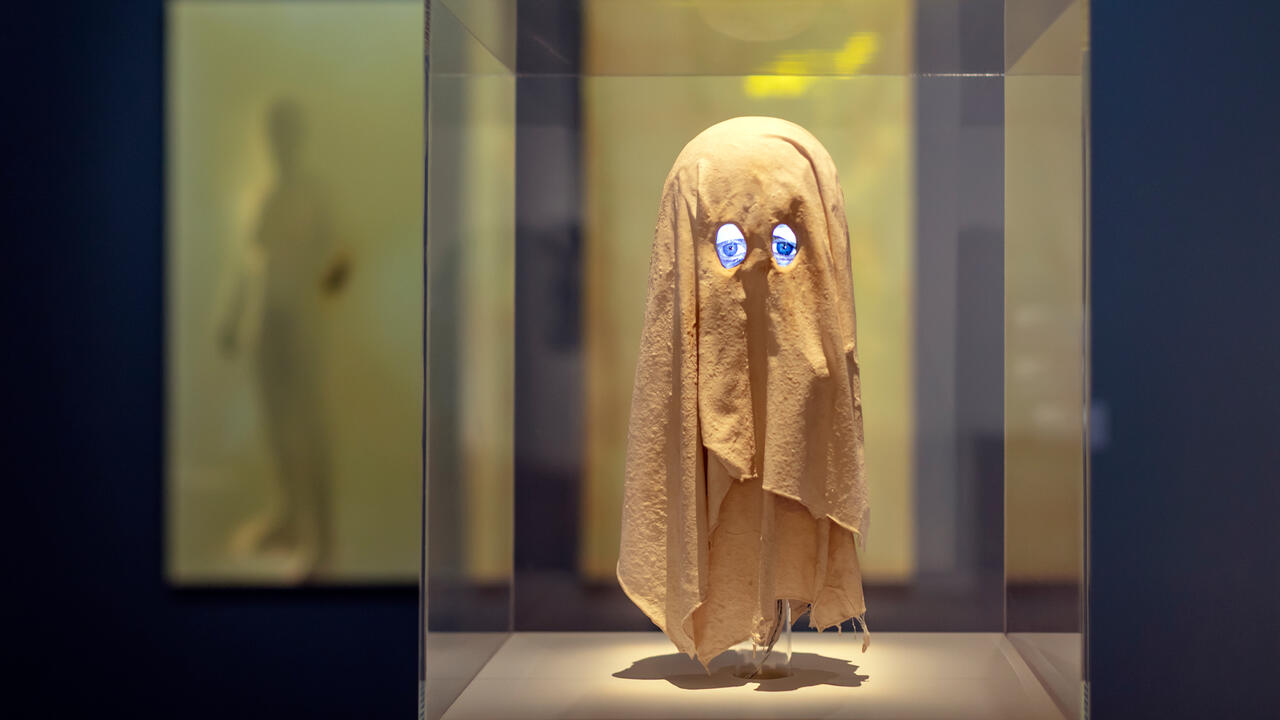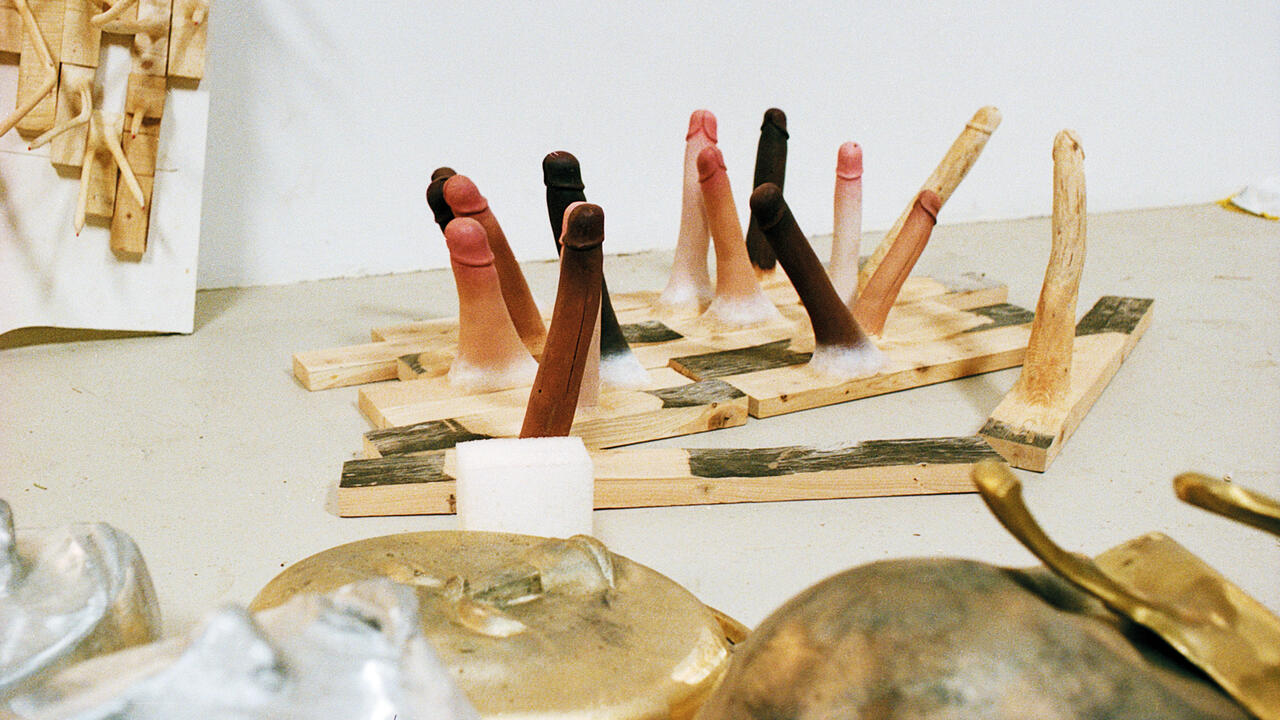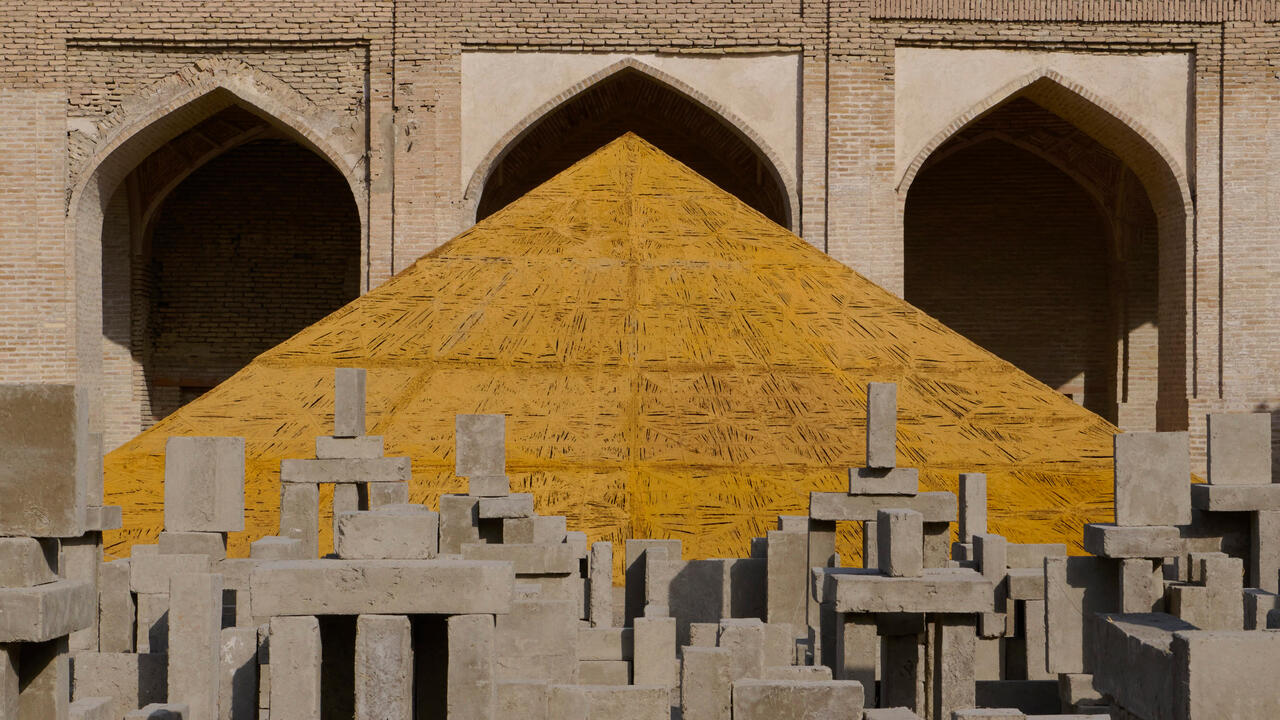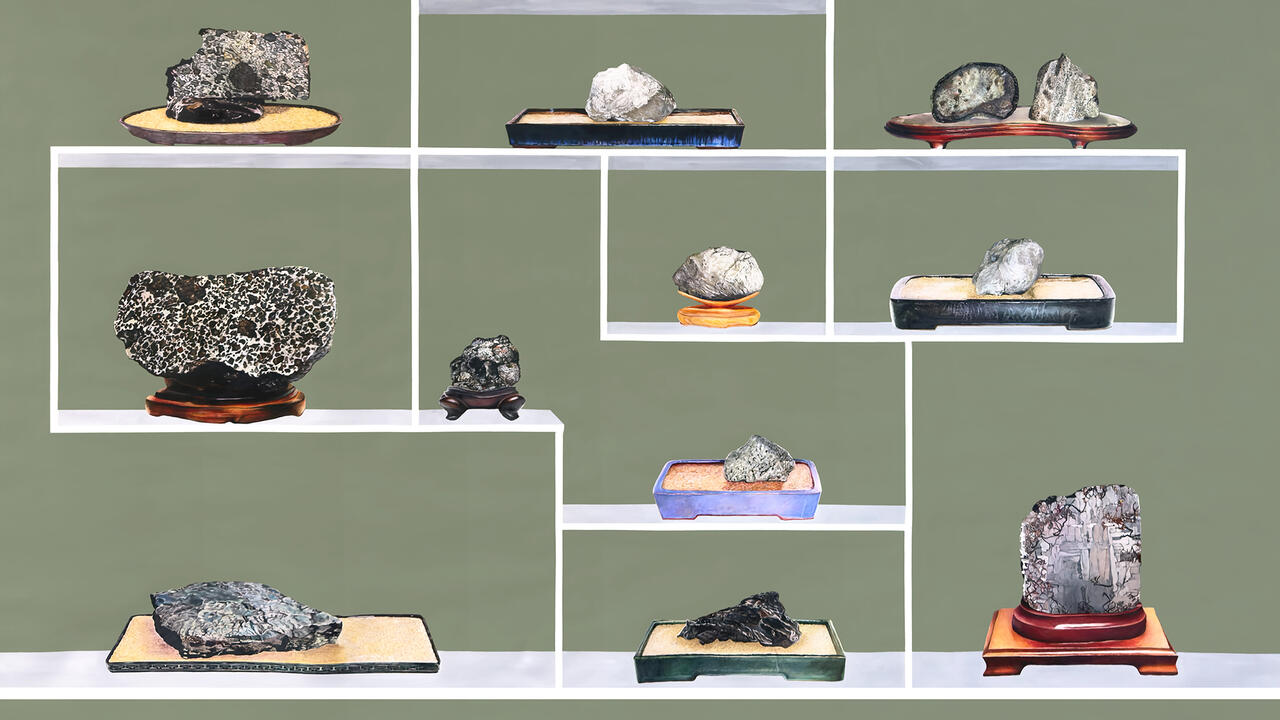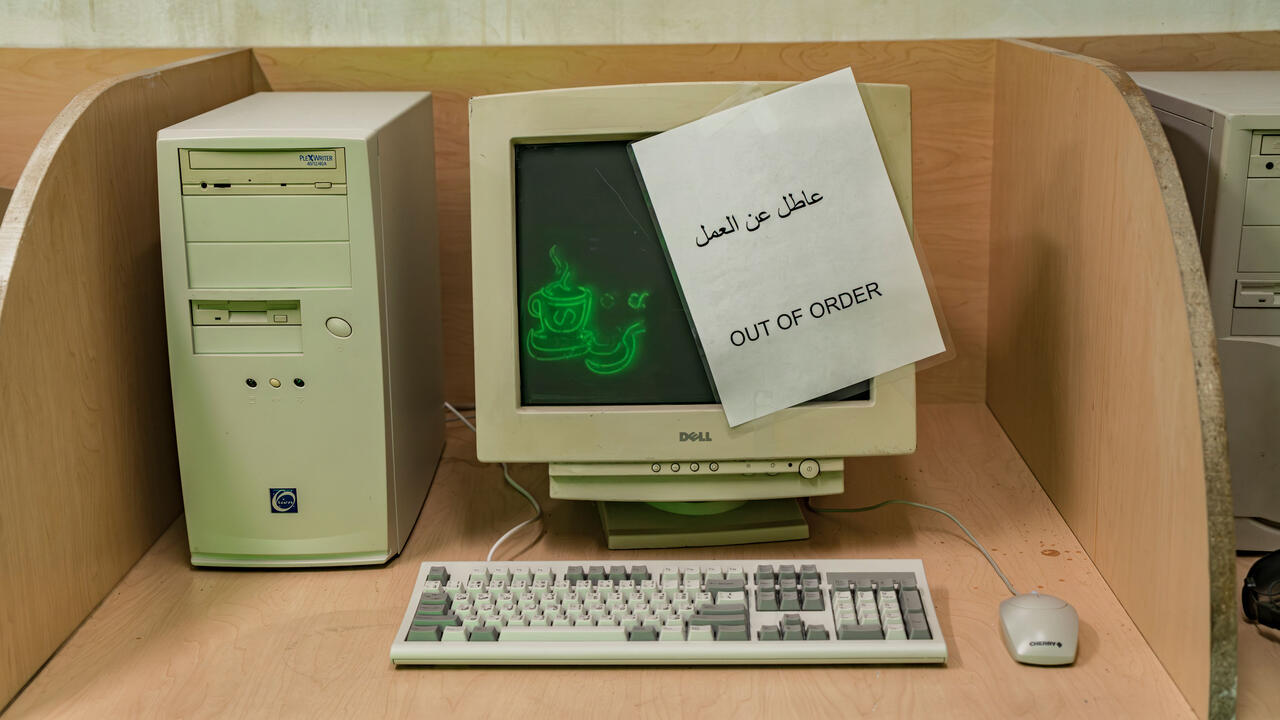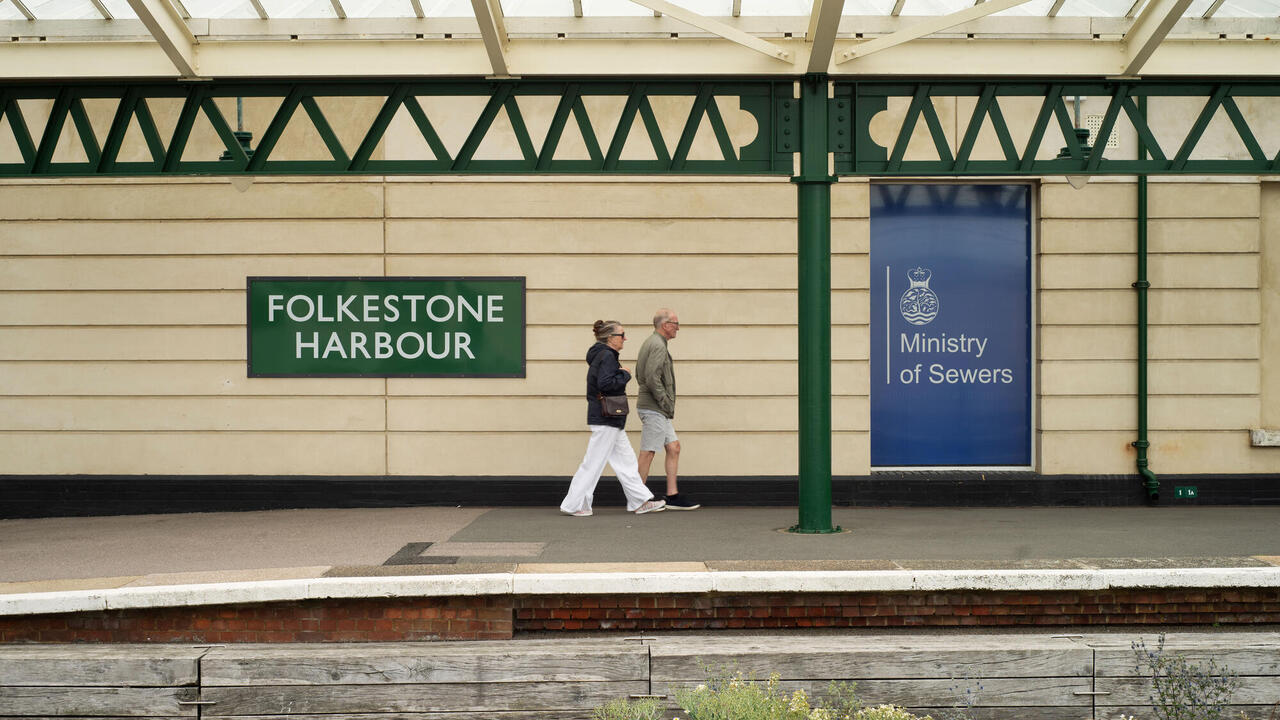Brussels’ Best: As Art Brussels Celebrates 50 Years The Exhibitions Not To Miss This Weekend
From a collection from Seth Siegelaub’s archive to a photography show in an artist’s home, your guide to the best shows around town
From a collection from Seth Siegelaub’s archive to a photography show in an artist’s home, your guide to the best shows around town


Anna Bella Geiger
Mendes Wood DM
18 April – 26 May
With ‘Circa MMXVIII Human Landscape’, the gallery Mendes Wood DM devotes a show to the Brazilian conceptual artist Anna Bella Geiger, who lives in Rio de Janeiro. The exhibition assembles the artist’s work in a span of media and styles: from the figurative paintings of her early ‘visceral’ period in the ’60s, up through experiments in photomontage, photocopying and ‘geopoetry’. Metal is a recurring medium and theme, standing for alchemical changes of state – whether of artistic media, or broader environmental realities. For one work in her series ‘Fronteiriços’ (Frontiers, 2017), Bella Geiger lined a vintage, iron file drawer with blue pigment and surrealistic imagery: like a time capsule that’s been pulled out of the ocean. The ‘Rolinhos’ (Little Scrolls, 1998), meanwhile, are lead plates that are partly unravelled, revealing small drawings, writings and maps: etched on one are the words ‘Local da Açao’, or ‘trouble spots’. A further ‘trouble spot’ that emerges in the exhibition is our world itself: her Sobre Nácar (On Mother of Pearl, 2003) is a small allegory of the world’s fragility, bearing a world map engraved onto the mother of pearl in a shell.

Filip Gilissen
Établissement d’en Face
14 April – 27 May
In several languages, the clichéd phrase ‘Think outside the box’ is printed on several trompe-l’oeil canvases made to look like chalkboards in this show at the non-profit space Établissement d’en Face. Here, artist Filip Gilissen presents a clever installation delving into the visual and verbal platitudes that surround us – whether in advertising, product and interior design or tech. The show resonates with the mainstreaming of ‘creative life’ in an age of co-working spaces and start-up culture. Outside, a bistro table and café-style awning wears the low-brow pun ‘Quelle Fleur Est-il?’; in lieu of an exhibition guide, there are chocolates whose wrappers are printed with details about the exhibition. Inside, Gilissen has renovated the space with laminate flooring and copper lighting. Upstairs, there are sliding oak barn doors engraved with platitudes and light puns, including references to the horse Friedrich Nietzsche famously flung himself upon. Downstairs, we find a series of cheap mass-produced Dutch bicycles, hanging in the air, and an intricate, shop-like interior containing an array of lamp-like objects, hanging and on shelves.
The result, while austere, is a dark commentary on the contemporary interiors of hotel lobbies, co-working spaces and start-up offices: markers of contemporaneity that draw from imagery of the ‘rustic’ or the ‘mobile’. It’s a menacing, tongue-in-cheek jab at the bland imagery that surrounds us in spaces of capital, gentrification and tech.

Jochen Lempert
A.Ve.Nu.De.Jet.Te, Institut de Carton
3 March – 26 May
Institut de Carton is a discreet, artist-run project in Brussels that puts on twice-yearly exhibitions in a private home. On view for their first show this year is Jochen Lempert’s ‘Phasmes’. In a partly unrenovated domestic space, the German photographer’s show begins with a small series in the building’s stairwell, and continues on yellowing walls across the floors of a pre-war townhouse. In this extraordinary space, Lempert’s restrained, lush black and white photographs of natural situations are given a further degree of intimacy. Lempert, who lives in Hamburg, brings his biological sense of patient observation and a taxonomical precision to photographs and photograms that teem with emotiveness. Lempert’s views of nature, such as photographs on view showing water striders on the surface of water, and beneath it, are joined here with a photograph of details of a Botticelli painting. These are studies in resemblance and type: a detail from a 17th century painting by Melchior d’Hondecoeter is paired with a similar-looking photograph of (real) birds in a pond. Works such as Cygnus (Narcissus) (2017) and Untitled (Waterfowl) (2017) or Untitled (Chloropus/Duck) (2005) manage to construct a tension of drama and narration using simple means. On the surface, Lempert’s images seem simple: from images of leaves to hazy views of the Baltic sea. Yet the works do so much, asking: how did we get here and where are we headed?

‘Works from Stichting Egress Foundation Amsterdam / Seth Siegelaub’
Jan Mot
13 April – 26 May
The collector and impresario Seth Siegelaub was a dealer and curator who was a key mover in conceptual art in the 1960s and ’70s. He died in 2013. Since 2014, Brussels gallerist Jan Mot has worked with the Seth Siegelaub / Egress Foundation Amsterdam: in 2016, for instance, Jan Mot restaged an exhibition held by Siegelaub in 1969 with works by Joseph Kosuth and Robert Morris. The present exhibition groups a small selection of works by Lawrence Wiener, Carl Andre, Hanne Darboven and Rosemarie Castorio among others. A majority of works bear some inscription relating to Siegelaub, from written dedications to works that relate to Siegelaub’s merging of dematerialization and exposition, such as Lawrence Wiener’s explosive, self-descriptive FIRECRACKER RESIDUE OF EXPLOSIONS AT EACH CORNER OF THE EXHIBITION AREA (1969). The works range from untitled drawings by Lawrence Wiener from the 1960s to Carl Andre’s Seven Books of Poetry from 1969: proofs of seven books, many of which were published by Siegelaub and Virginia Dwan that year. Siegelaub fans will appreciate the nod to his career in textiles in the 2018 work: a small piece of fabric paired with measuring devices, in two works by Siegelaub’s friend Laurent Sauerwein.

Jean-Luc Moulène
Galerie Greta Meert
19 April – 29 June
When Gertrude Stein wrote, ‘act as though there is no use in a centre’, she intended this positively. The works of Jean-Luc Moulène are similarly centre-less, without being obscure. Moulène’s exhibition at Galerie Greta Meert is a selection of his uncanny objects as well as two-dimensional experiments in colour pairings. His works hover between categories, like the sculpture Voïd (Paris, 2017) (2017), which resembles an overturned black Réne Magritte hat. Meanwhile, a number of abstract works seem like colour studies in which gold or silver leaves on panel alternate with bright colours, using cheap materials (like felt-tip marker) with expensive ones (gold and silver). Moulène’s sculptures are regularly enigmatic, and at times delightfully inscrutable: Méduse (Paris, 2018) (2018) is a bronze that is coloured an unreal blue patina; and the work Mais (Paris, 2018) (2018), meanwhile, is an oblong sculpture in which bead-like cold ridges show the outline of a cob of corn. Also on view is a promising selection of paintings by young artist Carlos Caballero, whose geometrical canvases pair abstract gestures with precise, figurative imagery.

‘Unexchangeable’
WIELS
19 April – 12 August
Last year, the WIELS exhibition ‘The Absent Museum’ was a highly-regarded show that marked the institution’s 10th anniversary. The current show ‘Unexchangeable’, like that show, draws on the fact that the institution has no permanent collection. ‘Unexchangeable’ brings together 73 notable artworks on loan from private collections across Belgium. Mostly, the works are from the late 1980s or early 1990s, and feature a number of canonical, well-known artists including Walter Swennen, Paul Thek, Louise Lawler and many more. Before you think you’ve seen these works before: what’s remarkable about this show is the fact that a number of works on view do not adhere to the trademark styles often associated with these artists, nodding to the idiosyncrasy of collecting practices, and shedding light on the diversity of these artists’ careers. Lawler’s remarkable, vibrant photograph Every Other Picture (1990), contains a picture-in-a-picture. There are early fruit reliefs by Jef Geys and a string of unusually expressive works by David Hammons. Some pieces, such as Angel Vergara’s ‘Bar d’en Face’ from 1994 is a time capsule image that relates to Brussels itself. Guillaume Bijl’s work is another highlight of eeriness: a plinth of dismembered faces, stacked one atop another.

‘Voici des Fleurs’
La Loge
19 April – 30 June
La Loge, set in a former Masonic lodge, presents a group show inspired by the historical artistic figure Akarova: a dancer, choreographer and public figure who was active in Brussels between the interwar years. The invited artists, including Anne Hardy, Hanne Lippard, Caroline Mesquita and others, are showing a number of works responding to the body, the voice and dance, beside works of Akarova that are also on view. Caroline Mesquita, known for her tactile sculptural practice in bronze and other metals, is showing a work in which two oversize metal hand-like pieces show interwoven fingers, like hands frozen in expression. The show attempts to look at the merging of art and life in interdisciplinary practices, for which Akarova’s dance is both medium and metaphor.

Ignasi Aballí
Meessen de Clercq
23 March – 5 May
Messen de Clerq has put on a show of Catalonian conceptual artist Ignasi Aballi, whose works were the subject of Madrid’s Reina Sofía retrospective in 2015-16. On view in the exhibition, titled ‘Translations’, are a number of works on paper, some of which are reminiscent of Josef Albers’s colour studies: grids of different tones marked with phrases such as ‘Peacock Blue’ and ‘Raw Sienna’. Aballi’s ‘Translations of a Japanese dictionary of colour combinations (Part II)’ (2018) is an intriguing series in which colour and language are transposed – and transposed again. One highlight is the 90-minute video Repaint Miró (2016), in which we see a restorer cover a bronze sculpture by Joan Miró in white, then re-paint it in its original colours.

Korakrit Arunanondchai
CLEARING
19 April – 26 May
At CLEARING, Thai-born, New York and Bangkok-based artist Korakrit Arunanondchai continues his roving, polymorphous exploration of identity, personal biography and cultural representation. The exhibition centres on his 2017 video with history in a room filled with people with funny names 4, the most recent in a series in which the artist plays Korakrit, a Thai painter of denim, and which documents his grandparents: as well as featuring in the video, the artist’s family reappear throughout the show, as does the performer Boychild, whose head is visible in the massive, plant-covered sculpture in the main room of the gallery. In the work There’s a word I’m trying to remember from a feeling I’m about to have (let the song hold us) (2018), a cast of the artist’s grandfather’s hands unite with a monstrous rat. The works re-employ, as a stage, a maquette of the United Nations headquarters in New York, taking this as a site of near-cultic projection and re-animation. The artist’s approach to interwoven personal and cultural histories has an autobiographical mandate but a larger historical one, too: after the 2014 military junta in Thailand, as he states in a press statement, ‘history’ is a subject no longer taught in schools there.
Main image: Louise Lawler, Every Other Picture, 1990, cibachrome with text on wall, 1 x 1.4 m. Included in ‘Unexchangeable’, WIELS, Brussels. Courtesy: the artist and Metro Pictures, New York









